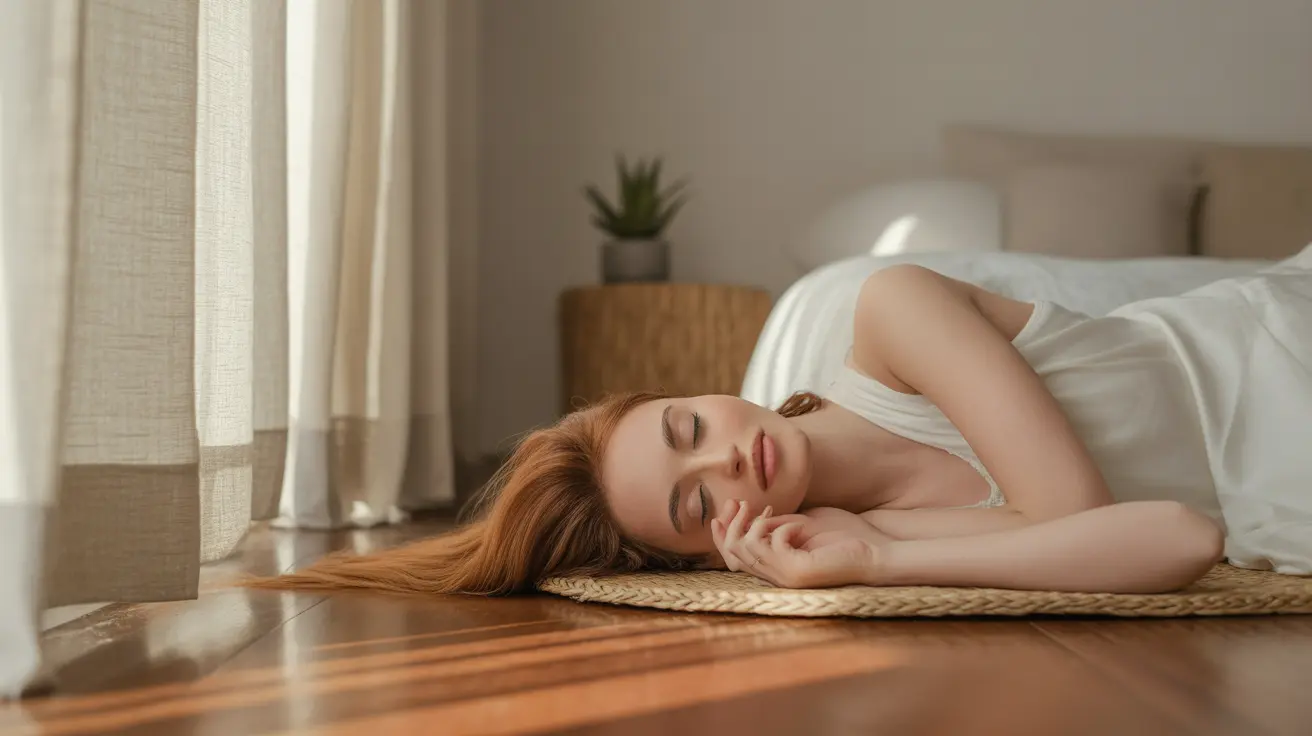The practice of sleeping on the floor has gained attention as an alternative to traditional mattresses, particularly among those seeking natural solutions for back pain and better posture. While this sleeping arrangement has historical roots in many cultures, modern interest focuses on its potential health benefits and drawbacks. Understanding the implications of floor sleeping can help you decide if this approach might benefit your sleep quality and overall well-being.
Understanding the Benefits of Floor Sleeping
Floor sleeping advocates often point to several potential advantages of this practice. The firm surface can promote better spinal alignment and may help distribute body weight more evenly. Some people report improved posture and reduced back pain after transitioning to floor sleeping, though individual experiences can vary significantly.
Natural Spine Alignment
When sleeping on a firm surface like the floor, your body maintains a more neutral spine position. This can help reduce unnecessary curves in the spine that softer surfaces might encourage, potentially leading to better posture during both sleep and waking hours.
Potential Risks and Considerations
While floor sleeping may offer benefits for some individuals, it's not without risks. The hard surface can initially cause discomfort and may exacerbate certain conditions. Understanding these potential drawbacks is crucial for making an informed decision about floor sleeping.
Temperature Management
Sleeping close to the ground can expose you to cooler temperatures, as cold air settles near the floor. This can affect sleep quality and comfort, particularly during colder months or in homes with poor insulation.
Cleanliness and Allergen Exposure
Floor sleeping can increase exposure to dust, allergens, and potentially mold, especially in humid environments. Regular cleaning and proper ventilation become even more important when sleeping at ground level.
How to Start Floor Sleeping Safely
If you're interested in trying floor sleeping, a gradual transition is recommended. Start with these essential steps to ensure comfort and safety:
- Use a thin mat or sleeping pad initially
- Choose a clean, well-ventilated area
- Ensure the floor is properly insulated
- Consider using a traditional pillow for neck support
- Maintain regular cleaning of your sleeping area
Creating a Comfortable Setup
The key to successful floor sleeping lies in creating a supportive yet comfortable environment. A thin mat or sleeping pad can provide minimal cushioning while maintaining the benefits of a firm surface. The setup should be clean, well-ventilated, and appropriate for your climate.
Who Should Avoid Floor Sleeping
Not everyone is a good candidate for floor sleeping. Certain conditions and circumstances may make this practice unsuitable or potentially harmful:
- People with mobility issues
- Those with certain joint conditions
- Elderly individuals
- Pregnant women
- People with circulation problems
Frequently Asked Questions
- What are the benefits of sleeping on the floor for back pain and posture?
Floor sleeping may help improve posture and reduce back pain by promoting natural spine alignment and providing firm support. The hard surface encourages proper weight distribution and can help maintain the spine's natural curves.
- Can sleeping on the floor make back pain worse or cause other health problems?
Yes, floor sleeping can potentially worsen back pain for some people, particularly those with specific spinal conditions or arthritis. The hard surface might also cause joint discomfort and pressure point pain in sensitive areas.
- Who should avoid sleeping on the floor due to mobility or health concerns?
Elderly individuals, pregnant women, people with mobility issues, those with joint conditions, and individuals with circulation problems should generally avoid floor sleeping. The practice may pose safety risks or exacerbate existing health conditions for these groups.
- How does sleeping on the floor affect allergies and exposure to dust or mold?
Floor sleeping can increase exposure to dust, allergens, and potentially mold, especially in humid environments. This makes regular cleaning, proper ventilation, and possibly using an air purifier essential for maintaining a healthy sleeping environment.
- What are the best ways to sleep comfortably on the floor without feeling cold or sore?
To sleep comfortably on the floor, use a thin mat or sleeping pad for minimal cushioning, ensure proper insulation from the cold floor, maintain good room ventilation, and consider using a traditional pillow for neck support. Gradually transitioning to floor sleeping can also help minimize initial discomfort.




